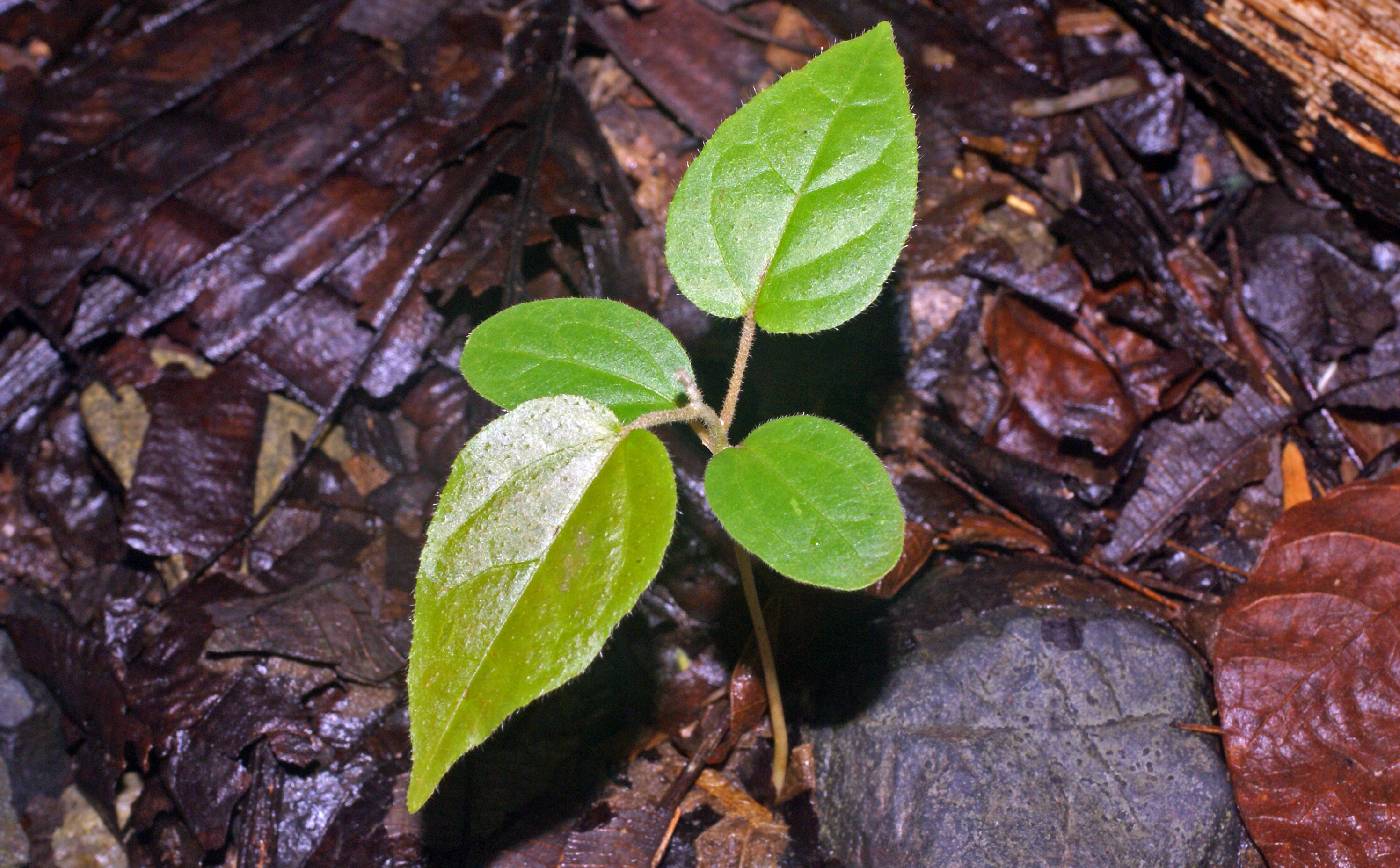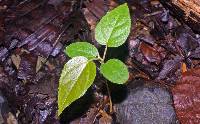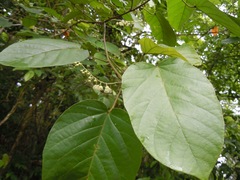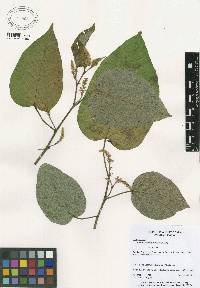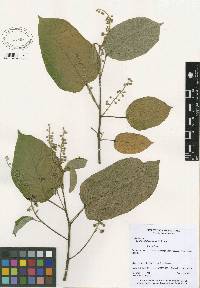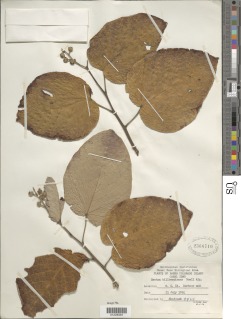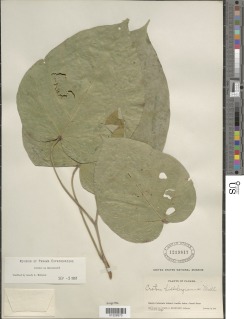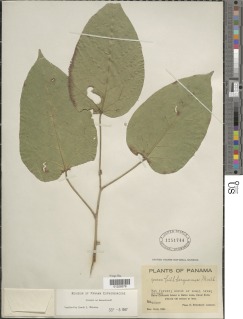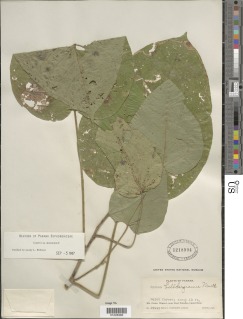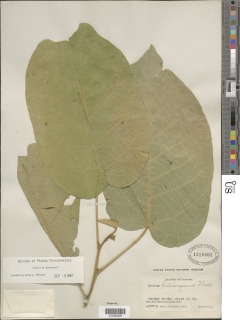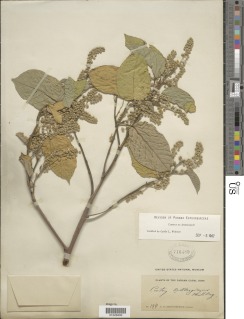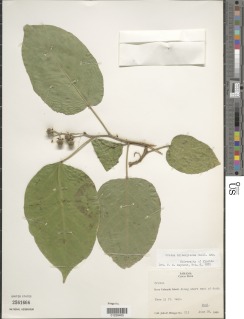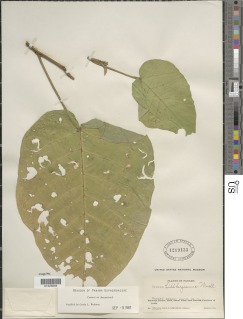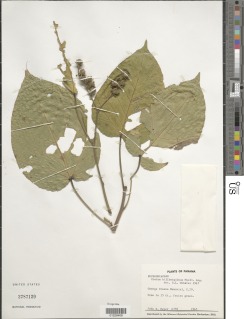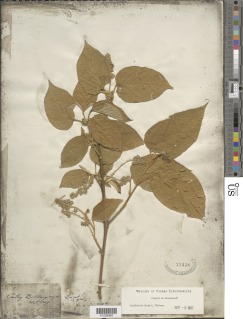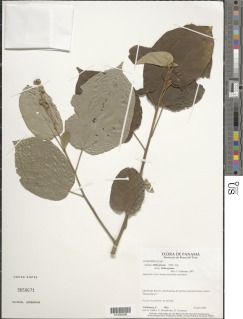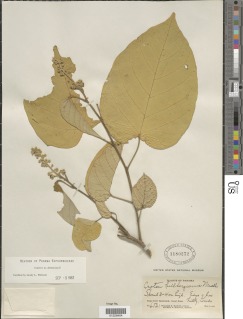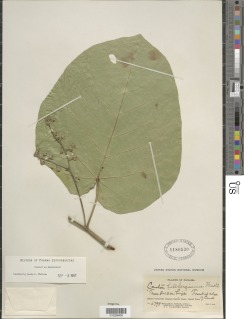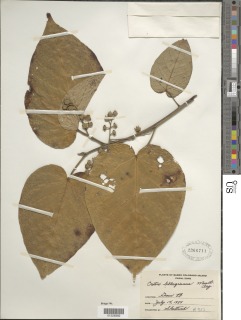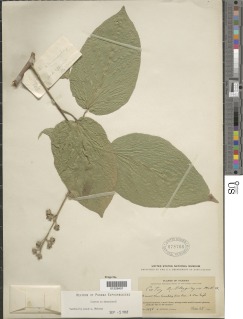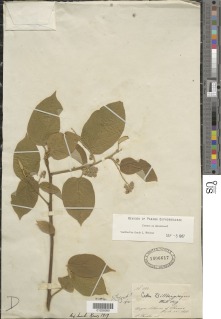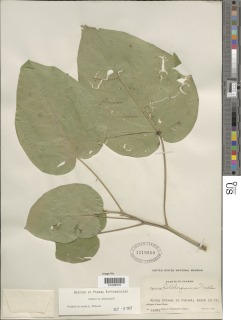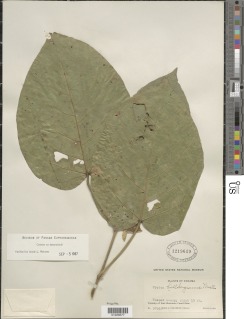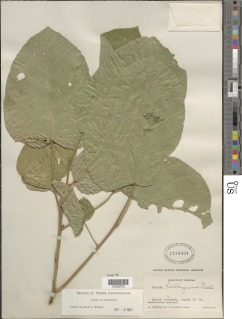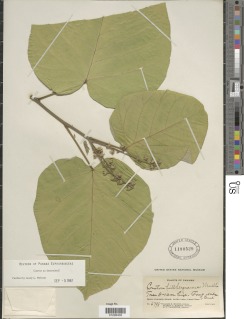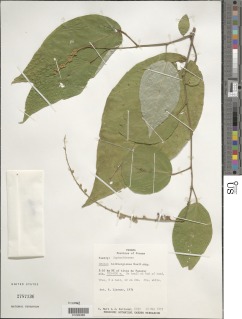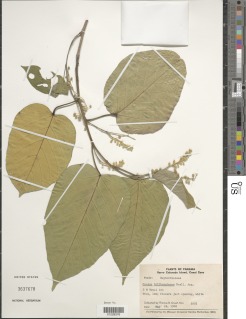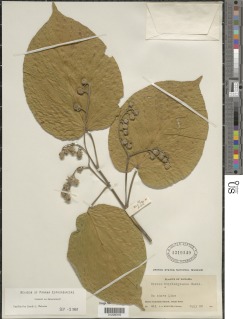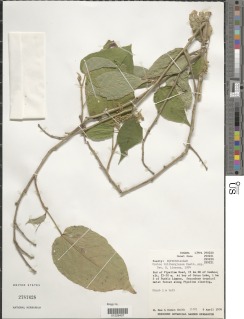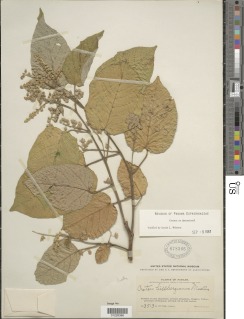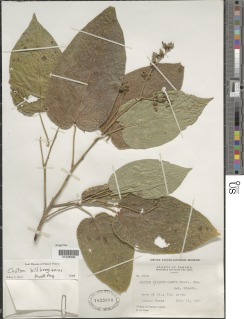

|
|
|
|
Family: Euphorbiaceae
sangrillo, more...vaquero
[Croton grosseri Pax] |
Description: Small tree, sometimes reaching 10 m in height but generally smaller, often with a leaning trunk. Leaves are fairly large, heart-shaped. Young leaves and twigs have scales, and feel asperous to the touch. Broken leaves or cut stems exude a red resin, hence the local names. During much of the year, larger plants have a few yellow leaves. The end of the petiole, just before it meets the leaf, has two round glands, one on each side. Reproduction: Small white flowers are on a long stalk extending above leaves, produced during the dry season. Fruits are small, round, green capsules, produced during the early part of the wet season. Distribution: Very common roadside species near Summit Garden and Gamboa, and along Pipeline Rd. Also common in natural canopy gaps in mature forest at Barro Colorado and Soberania. Similar Species: A number of species in the Euphorbiaceae have heart-shaped leaves, and it is typical in this family to have a few yellow or orange leaves on trees at any given time. A congener, LK crotdr Croton draco LK2 is very similar, but the glands at the base of the leaf are on stalks; it is rare in the area. LK hyeral Hyeronima alchorneoides LK2 is also common along roads, and has heart-shaped leaves, but lacks the leaf glands, and as juveniles has strange, swollen stipules which Croton lacks. Descripción: Árbol de 5 a 10 m de alto. Tronco recto y cilíndrico. Corteza exterior verde o gris y con lenticelas blancas. Ramitas terminales escamosas y ásperas al tacto. El desprendimiento de cualquier parte de la planta produce el flujo de una savia rojiza. Hojas simples y alternas, de 7-25 x 5-18 cm, ovadas, con ápice acuminado, bordes enteros y base cordada. Las hojas maduras se tornan amarillas o anaranjadas en la copa del árbol. Estípulas pequeñas y deciduas. Pecíolo de 2-20 cm de largo y con dos glándulas de color amarillo anaranjado en el ápice, justo en el punto de inserción con el envés de la hoja. La especie es monoica. Flores blancas. Frutos en cápsulas globosas, de 0.4-0.5 cm de diámetro, verdes y cubiertos de pelos en el exterior, con restos de los estigmas de la flor en la punta. Datos Ecológicos: La especie crece a bajas y medianas elevaciones, en bosques húmedos o muy húmedos. En Panamá se encuentra en las provincias de Bocas del Toro, Chiriquí, Coclé, Colón, Darién, Panamá, Veraguas y la comarca de Guna Yala. Común y muy abundante en claros que se originan dentro del bosque maduro de la isla de Barro Colorado. Deja caer sus hojas durante la estación seca, pero las repone a inicios de la estación lluviosa. Florece y fructifica de abril a septiembre. Especies Parecidas: A menudo se confunde con LK crotdr Croton draco LK2 , pero C. draco tiene savia roja y un grupo de glándulas en el punto de inserción de la lámina con el pecíolo. Usos: La madera es empleada en la fabricación de cajones, tableros y aglomerados. Monoecious shrub or tree, 3-10 m tall, densely stellate-pubescent all over except on upper leaf surface; sap copious, +/- sticky, yellowish, fragrant. Leaves alternate, simple; stipules subulate-lanceolate , 5-7 mm long; petioles to 6 cm long, with 2 or more sessile, round, yellow glands at apex on lower side; blades usually ovate, acuminate, usually cordate at base, 7-25 cm long, 5-18 cm wide, entire; basal veins 6-9, the cauline veins in 6-10 pairs. Racemes terminal (paniculate by aggregation), 6-15 (20) cm long, bisexual or staminate; pedicels 3-5 mm long; calyx copulate, 4-5 mm long, greenish-white at anthesis, glabrous inside, lobed to ca middle, the lobes 5, broadly acute and somewhat spreading; receptacles villous; staminate flowers terminal on (or full length of) racemes; petals 5, +/- elliptic, ca 3.5 mm long, villous; stamens 14-16, well exserted, erect or spreading, to 4.5 mm long; filaments villous; pistillate flowers 1-6 on basal part of raceme, developing before staminate flowers; calyx 5-lobed; petals lacking; ovary broader than high, subtended by a 5-parted, ringlike disk; styles 3, connate into a short column, each style bifid 2 or 3 times, the ends exserted as much as 4 mm and spreading, white, persisting in fruit, the ovary and basal parts of style densely stellate. Capsules obovoid to depressed-globose, to 1 cm diam, stellate-tomentose, green, the columella 4-4.5 mm long; seeds 3, obovoid, 4-5 mm long, 3-4 mm broad. Croat 14848, 16546. Frequent in the forest, mostly the older forest; also along the shore. Flowers from April to August, especially in April and May. The fruits mature from June to October, especially in August and September. |

